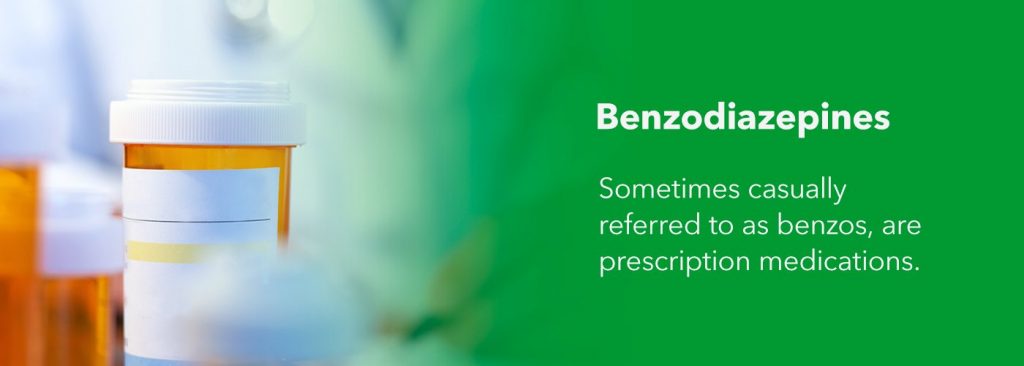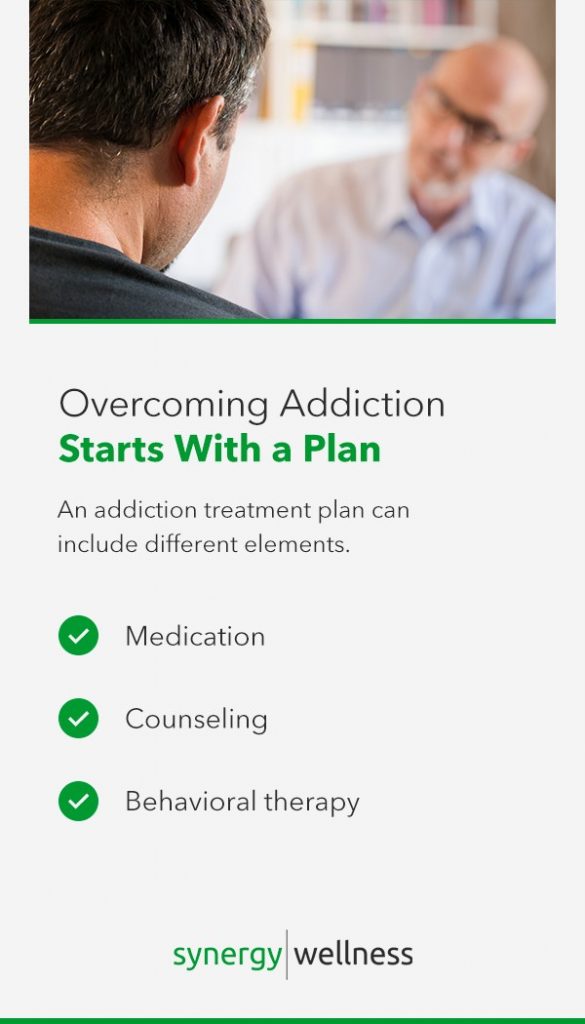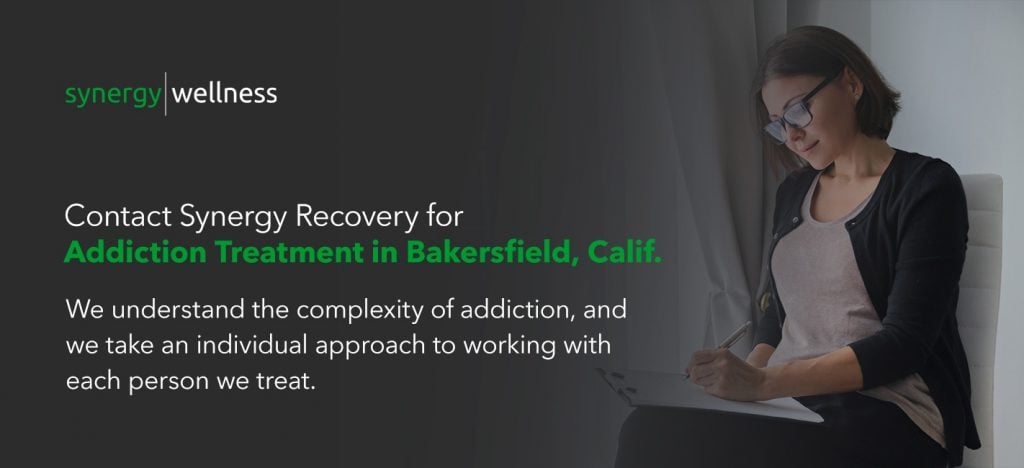
People use drugs for many different reasons. You might enjoy a drug, like alcohol, to help you unwind. You could use hard drugs as a coping mechanism. Perhaps you rely on a particular substance to fit in socially. Whatever the reason you decide to use a drug, it can come with the risk of addiction over time.
Some drugs are more addictive than others. The more addictive the drug, the faster you can develop a dependence, and the harder it will be to stop using it. What are the most addictive drugs, and how can you build a plan to overcome addiction?
What Causes Addiction?
More than 20 million Americans struggle with addiction and need treatment. What causes people to use and become addicted to various substances?
Psychoactive substances create a pleasurable feeling. When you use alcohol or another drug, your brain releases dopamine, the chemical responsible for that feeling of pleasure. Over time, you may need more of the same substance to achieve that same enjoyment. Or, you may need to change the way you use the drug. For example, heroin users may escalate from smoking or snorting heroin to injecting it intravenously. When injected, the drug can produce a faster and more powerful response.
As a physical dependence on a drug develops, you will experience cravings for the same pleasurable effects, despite it taking more of the drug to achieve that feeling. When you try to stop using that addictive substance, you will experience unpleasant and sometimes dangerous withdrawal symptoms.
Addiction is a complex condition that involves many factors, including heredity and your environment. Your genetic makeup may make you more vulnerable to addiction. Likewise, your surroundings can play a role. If you routinely see addictive behaviors happening around you, you may also be at risk for repeating those behaviors.
The 6 Most Addictive Substances
Which drugs have the highest potential for misuse?
1. Heroin
Heroin is one of the hardest drugs to quit. This substance, classified as an opioid, derives from morphine. The drug comes in different forms, including powder, granules and black tar, a sticky substance considered to have many impurities. There are many different ways to use heroin. Users can snort the drug, smoke it or inject it. The drug can produce intense euphoria, but heroin is also very dangerous. It can slow the heart rate and cause unconsciousness.
Using heroin comes with a considerable risk of overdose, which can be fatal. When someone overdoses on heroin, their breathing may stop, causing the brain to receive insufficient oxygen. If someone who has overdosed does not receive prompt treatment, the risk of death is very high. Treatment for overdose involves administering the drug naloxone, an opioid antagonist.
Using heroin once is not enough to trigger addiction, characterized by physical dependence. However, the more someone uses this drug, the higher their risk of developing addiction becomes. Heroin can be incredibly damaging to the body over time. Users risk heart infections, kidney and liver disease and collapsed veins.
People who sell heroin can cut it with fillers or other drugs like fentanyl, increasing its dangers. Heroin has a high potential for abuse. Some first-time users of heroin move onto the drug after developing a dependence on prescription opioids, such as oxycodone. They may no longer be able to acquire the drug with a legal prescription or may feel like the prescription medication’s effects are no longer strong enough.
2. Cocaine

Cocaine goes by many different names, such as coke, crack, snow and rock. The drug can come in white powder form, hence the name snow. It can also come in solid crystal form, often referred to as rocks. The drug derives from the coca plant, native to South America.
Cocaine is a stimulant. Users can snort the powder through their nose, rub it on their gums, smoke it or inject it directly into a vein. Like other addictive drugs, cocaine stimulates the release of dopamine in the brain. Under the influence of cocaine, a user will typically feel highly alert, energetic and happy. The drug can also cause paranoia and hypersensitivity to stimulation.
Cocaine dealers often mix the drug with filler substances, such as talcum powder or cornstarch. They may also add other drugs, such as fentanyl, to enhance its effects. As a stimulant, cocaine increases the body’s heart rate, blood pressure and temperature. Cocaine’s pleasurable effects and its addictive nature make it ripe for substance abuse disorders. Like other substances, it takes time to develop an addiction to cocaine. However, the body will eventually develop a tolerance for the drug and require more of the substance to produce the same effects. As this cycle progresses, the body will develop a physical dependence. Addiction is challenging to break, and the cravings for the drug can linger long after you have stopped using.
3. Methamphetamines
Methamphetamines, also referred to as meth, crystal meth ice or glass, is a powerful stimulant. The drug is typically clear, coming in a crystal-like powder form. This drug derives from its predecessor, amphetamine. Amphetamines are still in use today as legal prescription drugs, such as Adderall and Ritalin. These drugs are also stimulants, used to treat conditions like attention deficit hyperactivity disorder, but methamphetamines are much more powerful. Meth is also an illegal drug.
Crystal meth users most often smoke it from a pipe, but they may also inject, ingest or snort it. Meth can come from large labs or even be a homemade substance. The process of making the drug is dangerous, involving a combination of many different chemicals.
Meth, like many other drugs, can cause a powerful rush of dopamine, which causes a pleasurable feeling. But, this drug can also severely damage the body. Meth causes increased body temperature, weight loss, changes to the skin and teeth and difficulty sleeping. It can also radically alter the user’s behavior, causing anxiety, paranoia, violent behavior, hallucinations and even psychosis. Meth also comes with a significant risk of overdose.
As a highly addictive drug, meth can cause severe withdrawal when people attempt to stop using it. In addition to intense cravings for the substance, withdrawal from methamphetamines can cause depression, anxiety and psychosis.
4. Alcohol
Substance addictions do not always involve illegal drugs. Alcohol is easy to obtain, often even if the drinker is underage, and legal for adults. Most people over 18 will drink alcohol at some point in their lives. Drinking does not always lead to developing an addiction, but unhealthy patterns like binge drinking can contribute to the risk of developing alcohol use disorder.
Any type of alcohol can contribute to addiction. The Centers for Disease Control and Prevention recommend women have one drink or fewer per day and men have two drinks or fewer per day. This level of drinking is moderate. When someone surpasses moderate drinking, it starts to become a binge.
Alcohol can have a stimulating effect on the drinker, decreasing their inhibitions and making them chatty. However, this substance is a depressant. It lowers the heart rate and impairs coordination and speech. When someone is drunk, you may notice them exhibit slurred speech, poor judgment and coordination issues. Like other drugs, alcohol has a pleasurable effect that can contribute to the risk of substance abuse and addiction.
Ongoing alcohol abuse increases the risk of addiction, characterized by a compulsion to drink. You may continue drinking despite its adverse effects on your relationships and career. Despite their desire to stop drinking, many people suffering from alcohol addiction can’t stop without help. Over time, alcohol addiction can damage the liver, contribute to high blood pressure, weaken the immune system and increase the risk of some types of cancer.
5. Benzodiazepines

Benzodiazepines, sometimes casually referred to as benzos, are prescription medications. Doctors may prescribe these drugs to treat anxiety or other medical conditions, such as insomnia and bipolar disorder. This class of drugs sends a calming message to the brain by increasing the effects of a specific neurotransmitter. While these medications can be incredibly effective when used as a part of a medically supervised treatment plan, benzodiazepines also come with a risk of abuse.
Benzodiazepines include brand names like Xanax, Ativan, Valium and Klonopin. These drugs can have powerful effects on the body. After taking them, you may feel dizzy, confused or drowsy. Benzodiazepines can also affect your coordination. Your doctor will likely warn you not to drive or operate heavy machinery until you know how the medication affects you.
Medical experts typically do not recommend long-term use of benzodiazepines because of their addictive nature. If someone is taking a benzodiazepine for more than three to four weeks, they might experience withdrawal symptoms if they stop taking the drug.
Benzodiazepines affect the central nervous system, making them very dangerous to mix with alcohol or other substances. Alcohol and tranquilizers have sedative effects, and combining the two can be lethal.
A benzodiazepine user can become addicted, even when they’re careful to use these drugs as prescribed. People who do not have any medical conditions requiring treatment with benzodiazepines might also use this type of drug for recreational purposes.
6. Nicotine
Nicotine, like alcohol, is a legal substance. Nicotine comes from the tobacco plant, whose leaves are the primary ingredient in cigarettes and chewing tobacco. Cigarettes’ addictive nature is well-documented, as are the health dangers. Smoking accounts for the majority of lung cancer cases.
Nicotine produces a pleasurable, euphoric feeling that causes many people to continue smoking and chewing tobacco despite the well-known health repercussions. Nicotine is not particularly dangerous on its own, but the substance drives people to continue smoking. Cigarettes contain many other chemicals that are carcinogenic and damaging to your health.
Many smokers want to quit, but only 6% successfully do per year. When you attempt to stop using a nicotine product, you can experience cravings and physical symptoms like insomnia, hunger, anxiety, depression and GI issues.
Overcoming Addiction Starts With a Plan

Recognizing that you are struggling with a pattern of addiction is a significant step, but overcoming substance use disorders takes hard work and an intensive plan. Working with a trusted and expert treatment center can help you build the personalized plan you need to move forward with your life.
An addiction treatment plan can include different elements.
- Medication: Depending on the substance you are addicted to, your care team may use medication to help you safely go through withdrawal and manage persistent cravings. Medication-assisted treatment can be a highly effective approach to addressing addiction to various substances. For example, treatment for someone addicted to heroin may involve opioid agonists, drugs that diminish the effects of withdrawal without providing a high.
- Counseling: Counseling is an essential aspect of treatment. It can take different forms, including individual counseling and group sessions. Your therapist will help you understand what triggers your substance abuse and help you develop ways to avoid or address those triggers. In group counseling sessions, you will listen to other people talk about their experiences and share your story. In therapy, you can establish individual recovery strategies and methods rooted in peer support.
- Behavioral therapy: Cognitive behavioral therapy has proven to be an effective approach to addiction treatment. CBT is a particular type of talk therapy that focuses on recognizing and changing behavioral patterns. A therapist specializing in CBT will work with you to examine the relationship between your thoughts and your actions. CBT can be beneficialbecause people with substance abuse problems often think about quitting, but struggle to translate those thoughts into lasting action.
A crucial part of your treatment is laying the groundwork for long-term sobriety. You will learn valuable coping mechanisms and build a support network to help you prevent relapse. Treatment takes time and commitment, but developing a plan will help you achieve your long-term goals and reclaim your life.
Contact Synergy Recovery for Addiction Treatment in Bakersfield, Calif.
Synergy Recovery is here to help you build your plan for recovery and stick to it. We offer treatment for addiction to a wide range of drugs, including alcohol, heroin, prescription painkillers and methamphetamines. We understand the complexity of addiction, and we take an individual approach to working with each person we treat. Your story is unique, and your treatment should be too.
Contact us if you or a loved one in the Bakersfield, Calif., area is looking for help to beat addiction.




